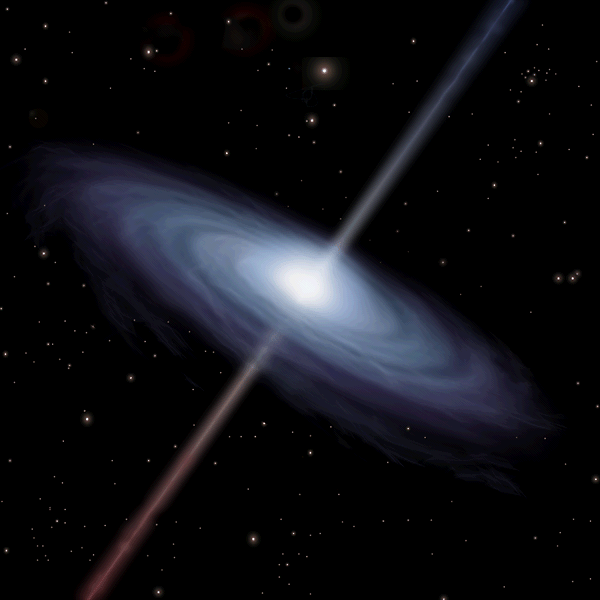New Hunt for Black Holes
June 14, 2012
A space observatory designed to search for and study one of the most powerful and mysterious objects in the universe was launched into Earth orbit on June 13. NASA‘s Nuclear Spectroscopic Telescope Array (NuSTAR) will be able to collect the high-energy X rays that surround black holes, regions of space whose gravitational force is so strong that nothing can escape from them. Because black holes are powerful enough to trap even light, astronomers cannot see them directly. But just before a cloud of gas and dust–or even a star–is sucked into a black hole, the material gets so hot that it glows and emits invisible high-energy X rays. Scientists use the rays given off by these doomed objects to identify, measure, and study black holes. Astronomers also plan to use NuSTAR data to study the effects of black holes on their host galaxies.

A supermassive black hole sucks in a swirling disk of matter, shooting out beams of particles, in this artist’s conception. (NASA)
The NuSTAR observatory includes the first focusing telescopes that will be able to image the sky in the high-energy X-ray region of the electromagnetic spectrum. Because of this ability to focus, the images NuSTAR produces will be 10 times as sharp as images from current X-ray telescopes, even the orbiting Chandra X-ray Observatory. NuSTAR’s instruments will be able to see through clouds of gas and dust that block low-energy X rays.
NuStar’s mission also includes gathering data on other high-energy-emitting targets (objects that give off high-energy X rays). Among them are supernovae, massive exploding stars that create all of the chemical elements heavier than the two lightest elements–hydrogen and helium–including iron, gold, and uranium. Astronomers also planned to investigate active galaxies, galaxies that give off vast amounts of radiation from their nuclei (cores).

NuSTAR (NASA/JPL-Caltech)
NuSTAR was launched in mid-air from a L-101 Stargazer aircraft atop a Pegasus XL rocket built by Orbital Sciences, a private company based in Dulles, Virginia. Such airborne launches require less fuel than a traditional surface take-off. The NuSTAR mission is part of NASA’s Small Explorer class of low-budget space flights.
Additional World Book articles:


